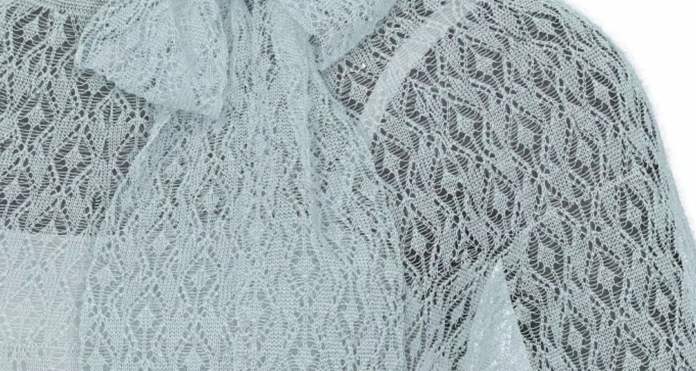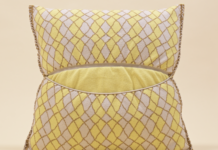Beth Ranson reports
Shima Seiki’s high-tech flat knitting machines are programmed via the company’s ‘SDS-ONE Apex Series’ software, which designers also use to design and develop knitwear. Until now designers had to have access to an actual SDS-ONE Apex design system – accessing the design element of the software remotely just wasn’t possible.
Today, Shima Seiki launches its first subscription-based software, Apex Fiz– a platform created in response to the shifting work patterns induced by the global pandemic. Access for designers to design tools at remote locations is now possible.

Without the ability to travel, and with trade shows and yarn fairs cancelled, designers have been unable to make the necessary trips to view yarn innovations and collections with the tactility they so crucially need.
Whilst shade cards can still be requested from spinners, the waste produced by ordering shade cards that end up being surplus to requirement – not to mention the vast amounts of space needed to store them whilst working from home- means designers have far less access to yarn and trend inspiration. Combine this with the delays many factories are facing in sampling lead times, and the result is a severe lack of access to yarn and fabrics to integrate into designed collections.
Many knitwear designers are led by yarn choice, so this presents challenging circumstances for creativity. With Apex Fiz, Shima Seiki offers their solution to this problem, through 3D simulation of fabrics that can replicate the textures of yarns from industry wide spinners.

Whilst Shima’s August 2020 announcement described the capabilities of Apex Fiz and Yarn Bank as two separate platforms, Shima has now showcased the direct relationship between these platforms, detailing how their integration can aid yarn experimentation and enhance sourcing methods.
Sceptical about 3D simulation of knitted fabrics?
Below is a brief introduction to the capabilities of Apex Fiz when utilised alongside Yarn Bank- and it really could alter your outlook…
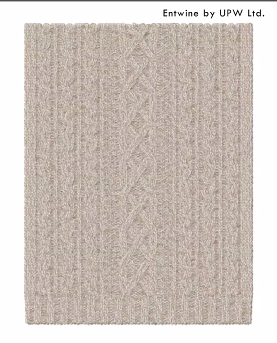

How does Yarn Bank work within Apex Fiz?
Shima’s Yarn Bank is the world’s first web service that allows registered users (registration is free) to search and view the latest global yarn information provided by global spinners. With 38 yarn manufacturers already submitting their yarn data, Shima Seiki continues to build Yarn Bank with a direct focus on the inclusion of more European spinners.
Supported by Google Chrome, Microsoft Edge and Safari, Yarn Bank has solved the previous problem that designers may have had when using Apex software. Frustration could be caused when simulating a fabric within Apex software that was then unable to be replicated in ‘real life’ due to inability to source a suitable similar yarn.
Once a yarn is selected from Yarn Bank, the yarn data can be downloaded directly into Apex Fiz, and simulated into a fabric. Linking Apex Fiz with Yarn Bank creates a strong supply chain between designers, spinners and manufacturers, as all data can be downloaded from Yarn Bank into Apex Software and contained alongside the fabric design.
Designers can now simulate fabrics that they could actually get manufactured, and the yarn data can be auto generated into option sheets, removing the need to spend time typing out yarn names, qualities, fibre content and colour codes.
The Yarn Bank interface allows users to search yarns by material, season, gauge, price range, colour and more. Yarn books from spinners, as well as digital simulations for all available shades are shared. Yarn textures can be viewed in impressive detail by zooming into the knit down simulations.
Although yarn cannot be purchased directly through Yarn Bank, spinners can be contacted directly through enquiry forms, and all contact details are readily available.
What do the yarns look like when digitally simulated?
Real scanned yarns are used for the virtual sampling, which is how it becomes so realistic. Knop, chenille, mohair, wools and more can be visualised.
Once the yarn is applied to the fabric simulation, plys can be increased to adapt thickness for the intended gauge.
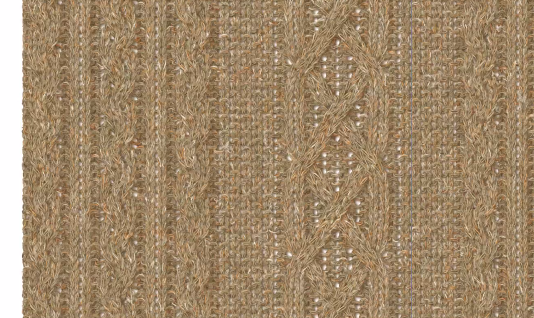
How are fabrics simulated?
Apex Fiz designs for each and every loop in the knitted fabric. By first selecting the gauge, stitch size and tension details, a hem structure and depth can be selected. From this point, the fabric is a ‘blank canvas’ onto which designers can experiment with stitch structures.
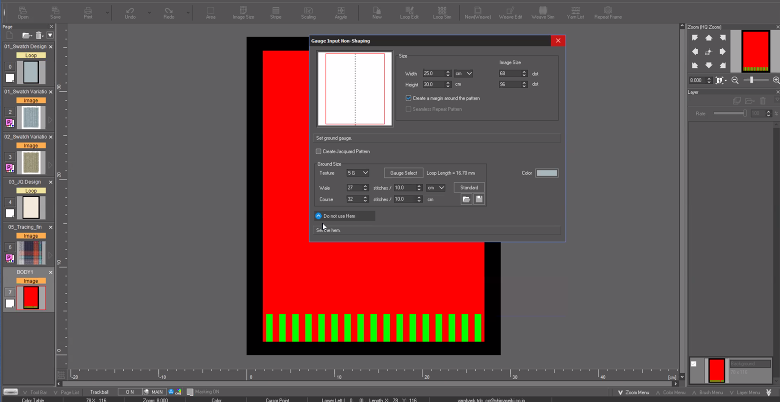
For less experienced knitters, and indeed- designers looking for inspiration, the Apex stitch library of over 1500 patterns can be utilised to build structures.
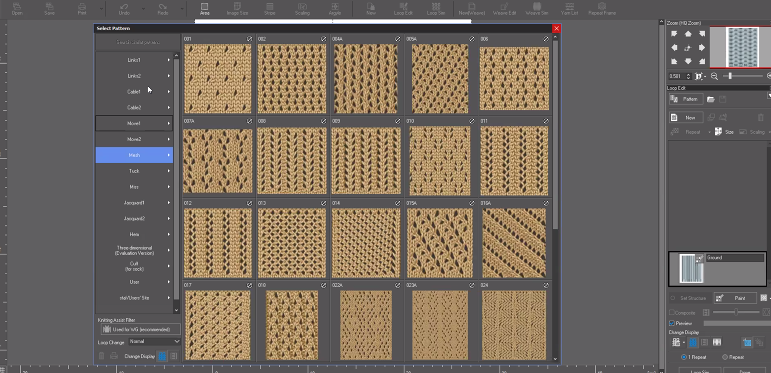
Once the stitch is complete, selected yarn data can be added. From here, any number of ‘fabric samples’ can be simulated, to visualise how one knitted structure could look in a variety of yarn and fibre choices and colours.
These images can then be saved and either shared as images or automated into ‘options’ sheets, automatically inputting the yarn and colour data so designers don’t have to.
Which structures can be simulated?
In short, a vast amount! Cables, lace, tuck stitches and more.

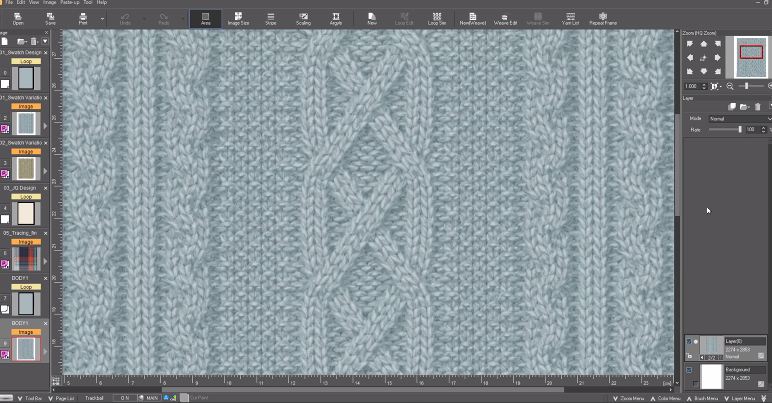
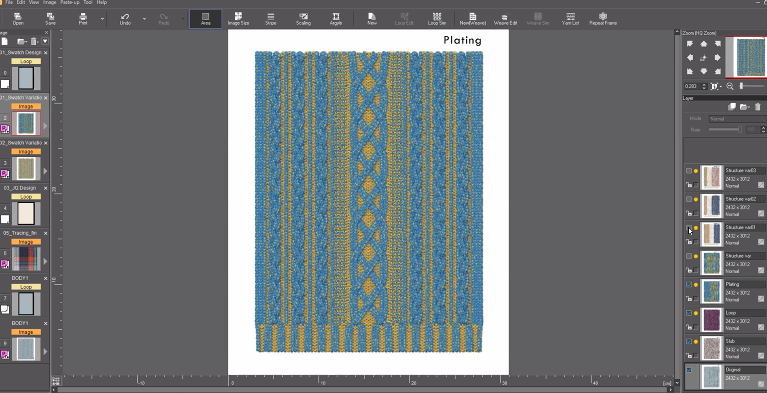
Intarsia and jacquards can be designed too, which for many designers will be a useful tool. Apex Fiz supports accurate loop design, so designers can submit jacquard designs with more confidence, avoiding potential distortion of images that can occur when designing jacquards using grids or other software.
With tools to aid the speed of the design process too, repeat pattern functions can be used to trial image and pattern placement and scale.
Apex Fiz also includes a jacquard library from which designers can select and combine ready-made patterns.

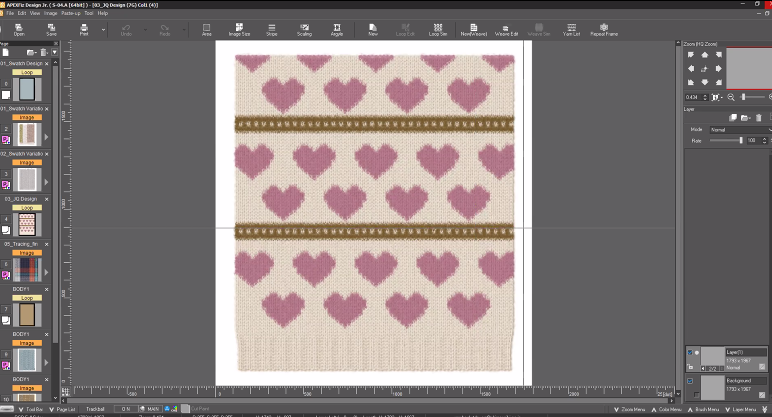
3d garment simulation:
With the purchase of the more advanced Apex Fiz package, 3D garment simulations can be created too. Whilst the fabric is edited on the left hand side of the screen, the fabric on the body is edited in real time to show how the design would look on the intended garment outcome.

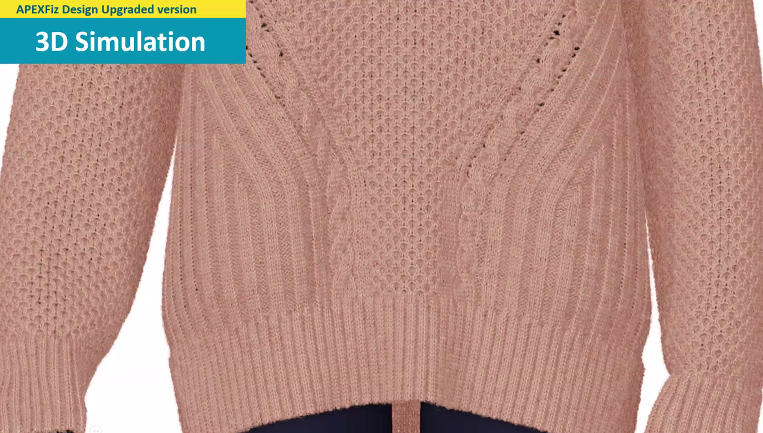
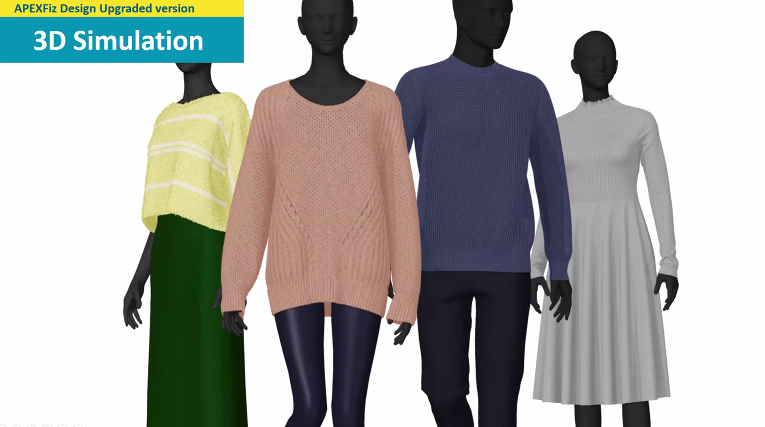
Colour way simulation:
Colour way variations can also be automated. This is a time saving visualisation tool, valuable for design meetings and range plan discussions. Instead of re colouring numerous designs one by one, Apex Fiz can auto simulate colour variations using the defined colour palette. Colour chips can be included, detailing accurate production information utilising the yarn data from Yarn Bank.
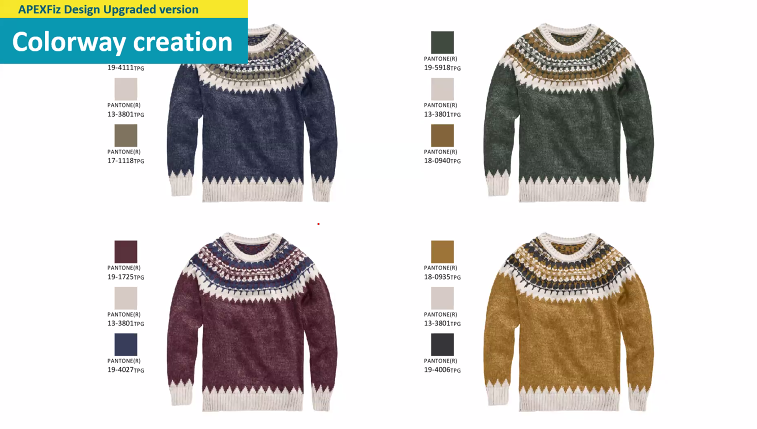
Weave simulations:
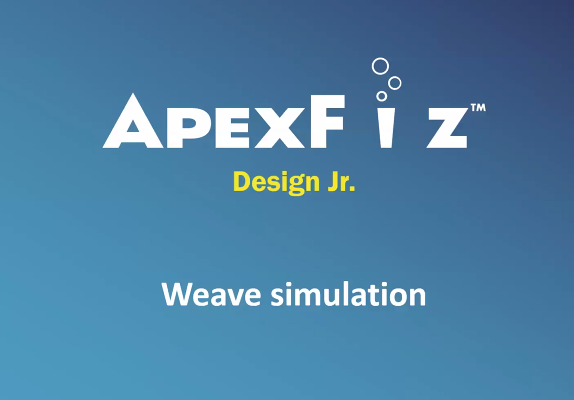
Apex Fiz also offers weave simulation capabilities, with the same relationship to Yarn Bank as the knit design interface. Basic, plain, twill and satin fabrics as well as many more can be simulated, and textures can be added too.
Raising effects can be added, as well as wrinkles.
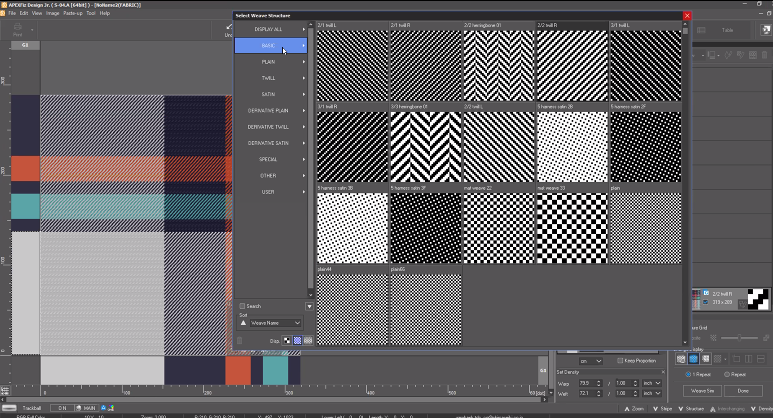
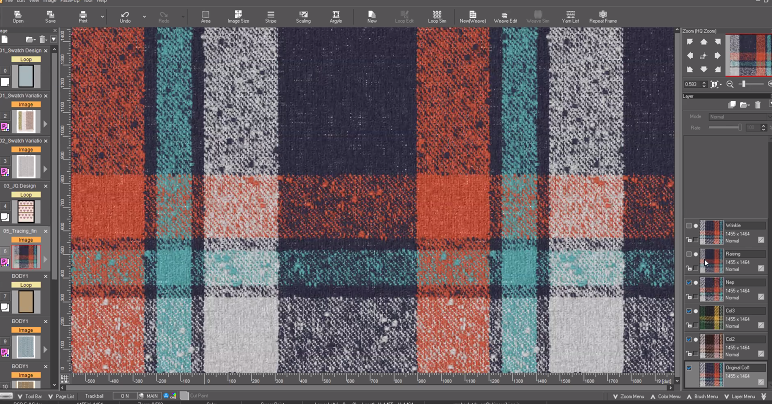
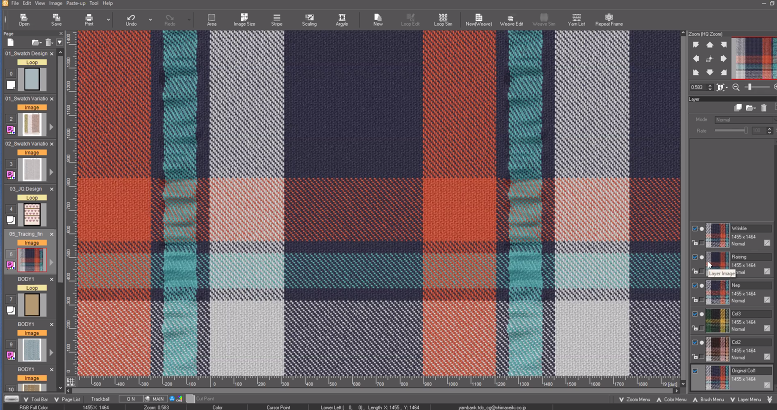
How can Apex Fiz support knitwear designers?
Whilst previously the use of Apex software was limited to the computer on which the system ran (usually stuck in an office), now designers can remotely access the software anywhere on their PC. Once the basic tools are understood, the interface is surprisingly intuitive to use.
Whilst no digital simulation could ever provide the true feel of a fabric on skin, on a design level Apex Fiz addresses the need for knitwear designers to visualise yarn characteristics and texture in combination with stitch structure.
Many existing digital simulation software lack this tactility. Apex Fiz could be the solution to this.
For production, the data that is produced within the software can also aid communication with factories and technicians, as file data can be shared.
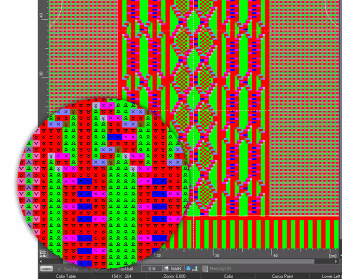
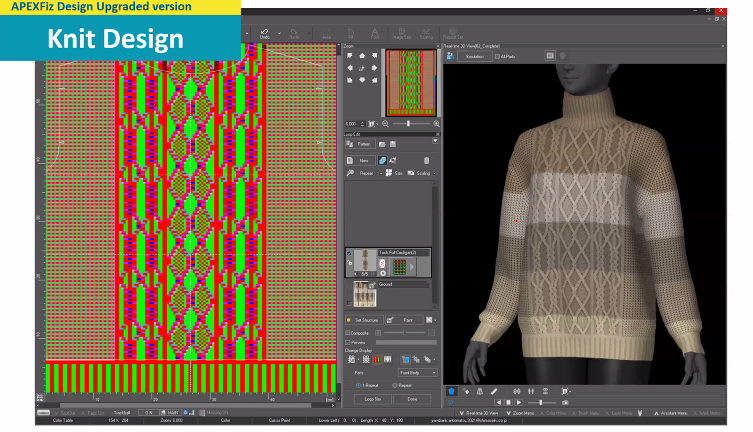 In educational terms, if more spinners could submit their yarn data and join forces with Yarn Bank, access to yarn innovations could reach more designers and crucially, more students. Access to trade shows and yarn fairs is costly and exclusive. Yarn Bank provides a window into the ‘spinning world’ for students who may not be able to access these yarns otherwise. The fact that Shima Seiki have chosen to make Yarn Bank a free service is commendable. Hopefully it will remain a free, inclusive resource so students can learn more about the yarns that exist globally.
In educational terms, if more spinners could submit their yarn data and join forces with Yarn Bank, access to yarn innovations could reach more designers and crucially, more students. Access to trade shows and yarn fairs is costly and exclusive. Yarn Bank provides a window into the ‘spinning world’ for students who may not be able to access these yarns otherwise. The fact that Shima Seiki have chosen to make Yarn Bank a free service is commendable. Hopefully it will remain a free, inclusive resource so students can learn more about the yarns that exist globally.
Now that tactility is ‘on the table’ for digital fabric simulation, it will be interesting to see how designers ‘take’ to Apex Fiz. Perhaps this software will be a game changer for those who previously disregarded digital knitwear simulation due to the lack of surface texture visualisation.
Accessing the software
Apex Fiz has low-cost one-off licence contract fee, followed by an affordable monthly software fee. Apex Fiz Design Jr is the ‘basic’ package, which allows 3D fabric simulation. This can be upgraded to include 3D garment simulation and other services, at an extra cost.
To learn more about how Apex Fiz can be purchased and the different packages, click here.
A demo video of the software can be also be viewed on the Shima Seiki website.

Subscribe To Our Newsletter
Join our mailing list to receive the latest news and updates from our team.


